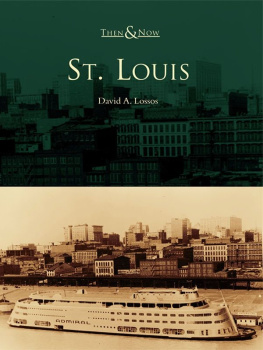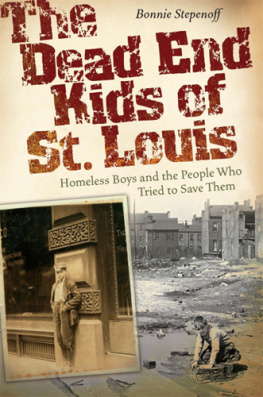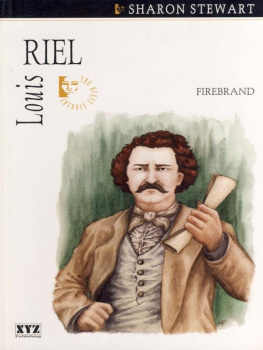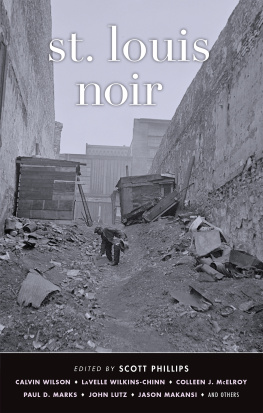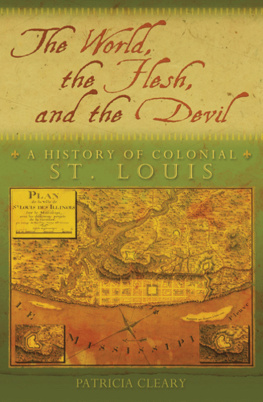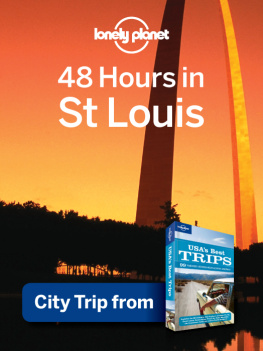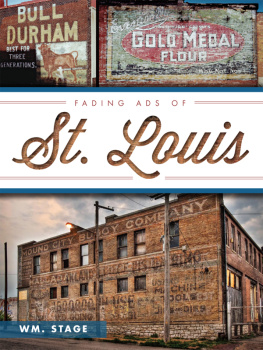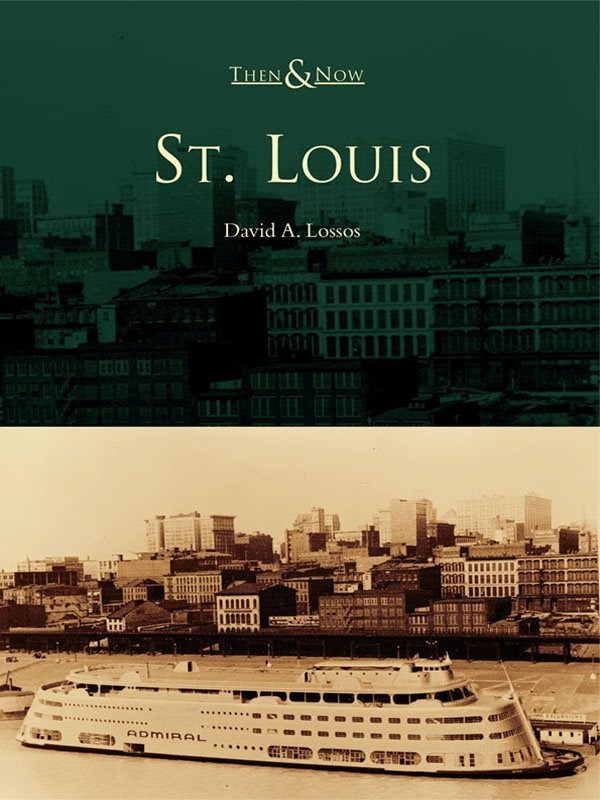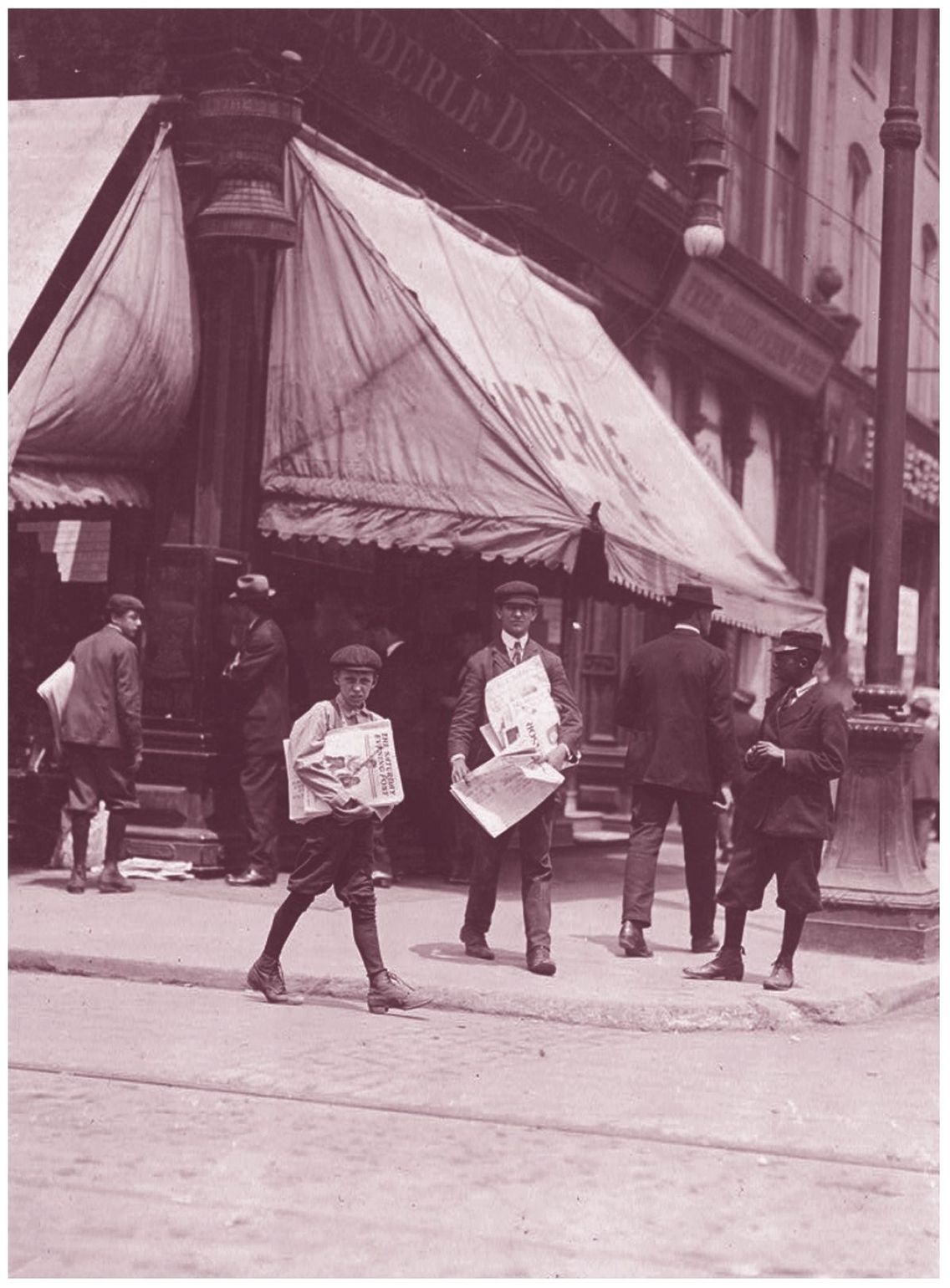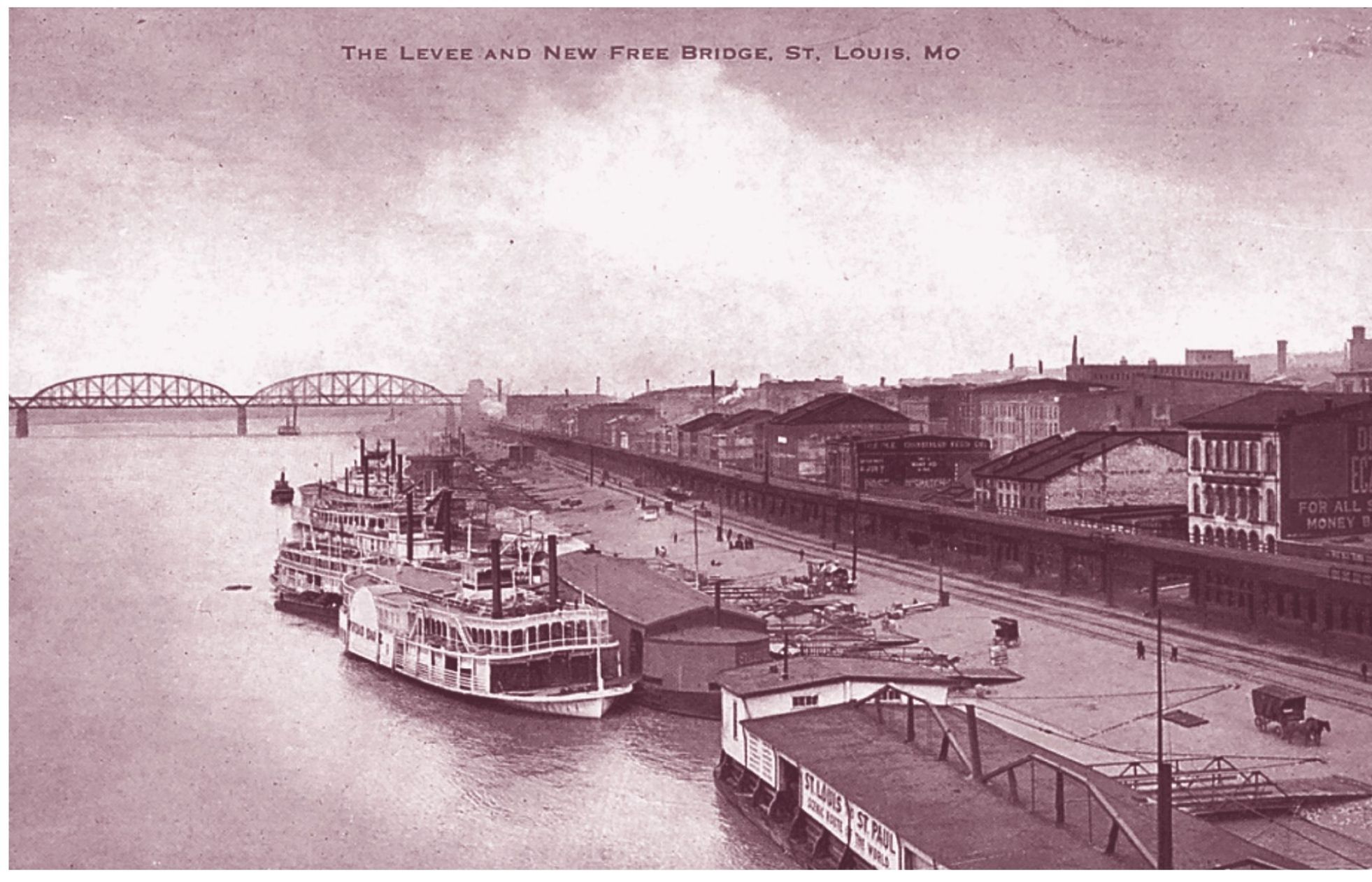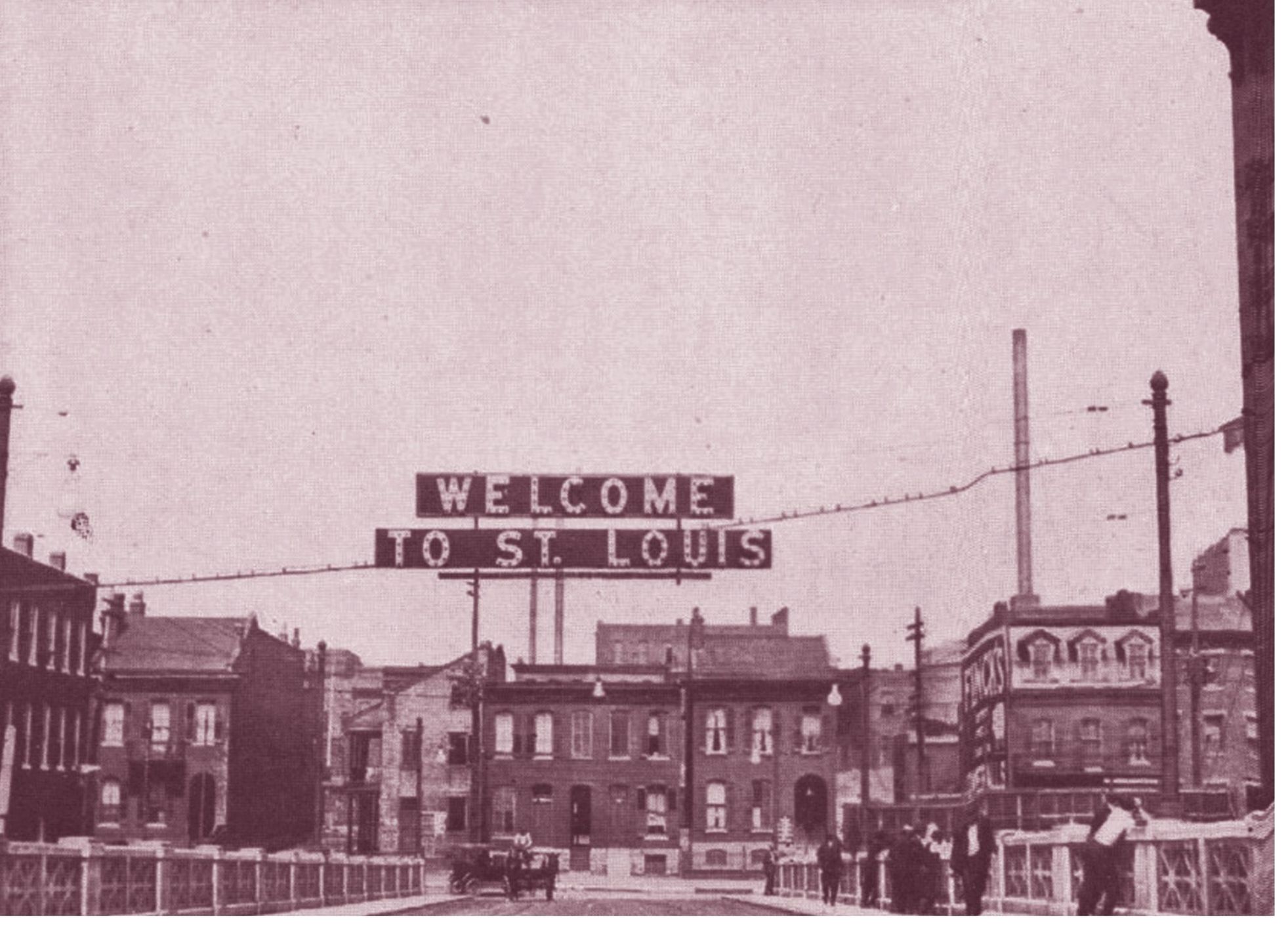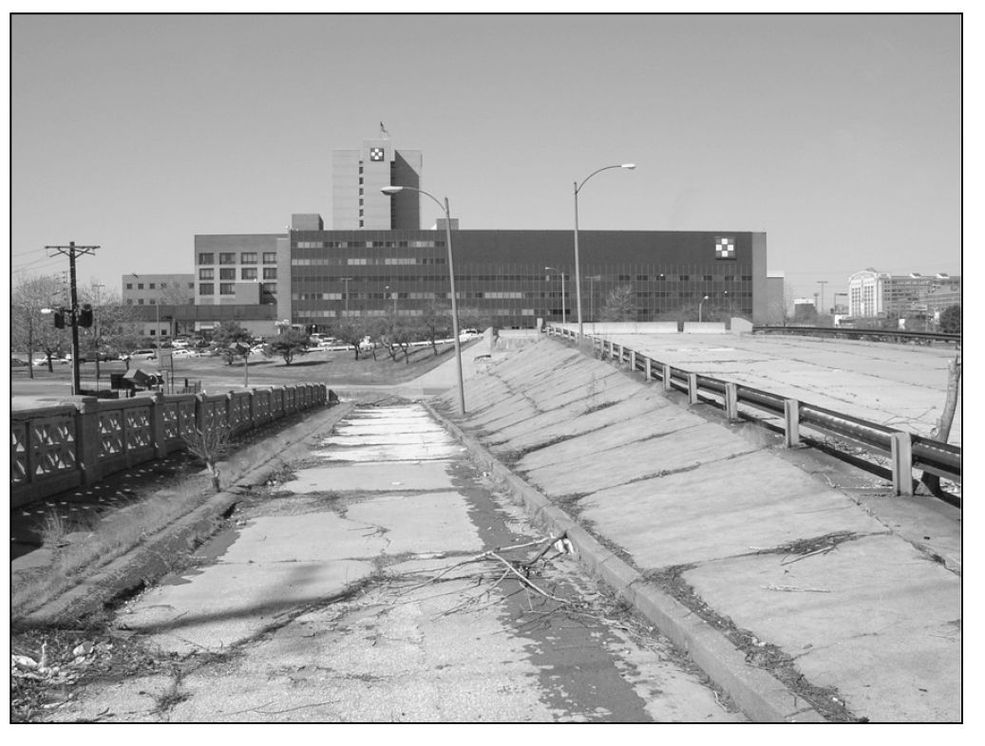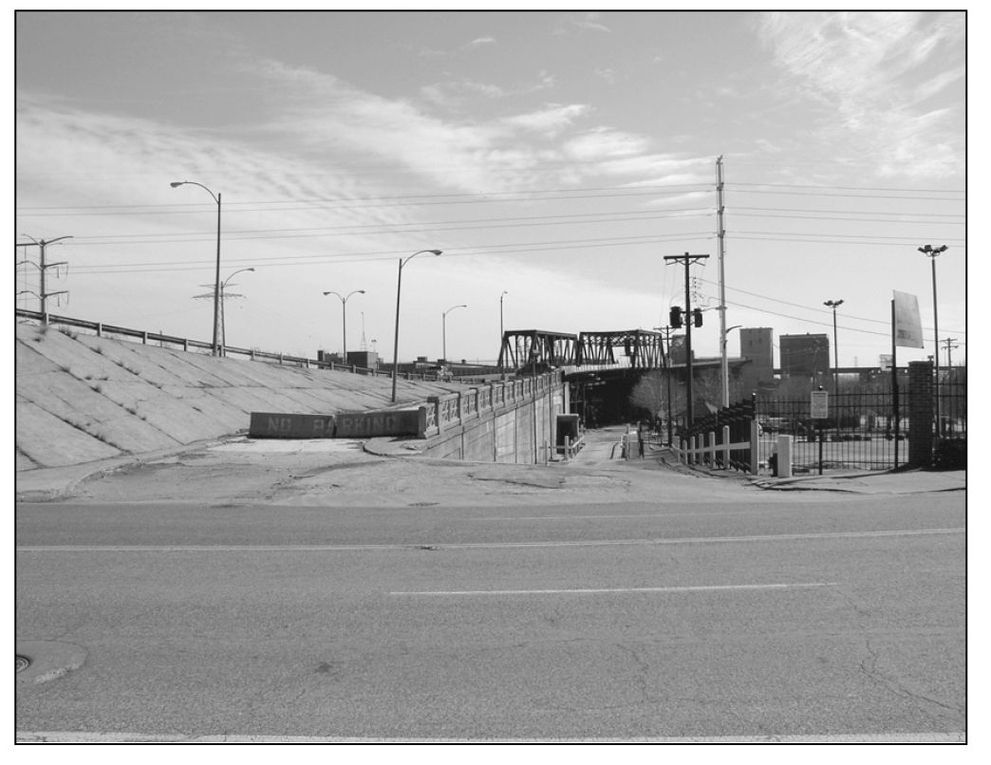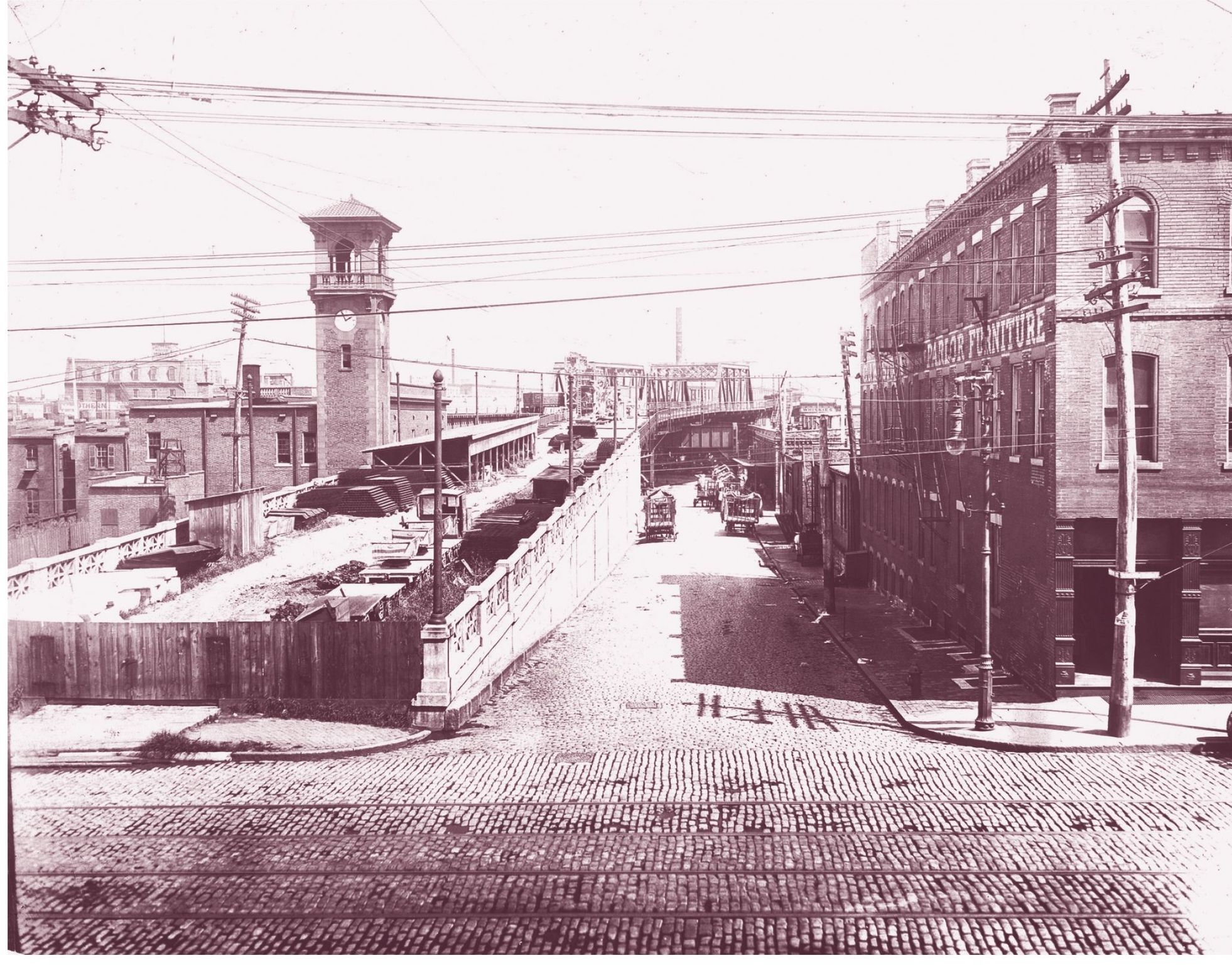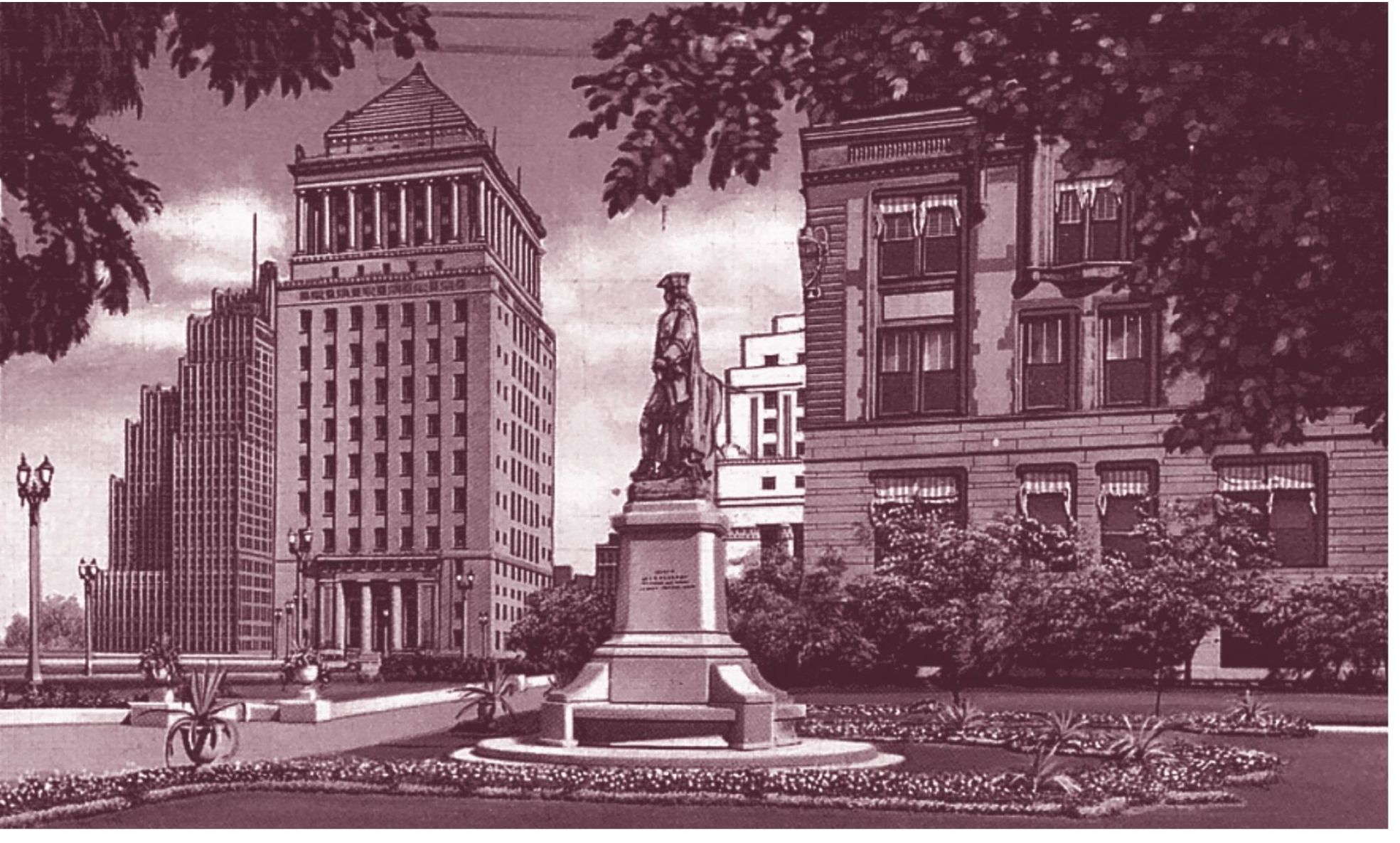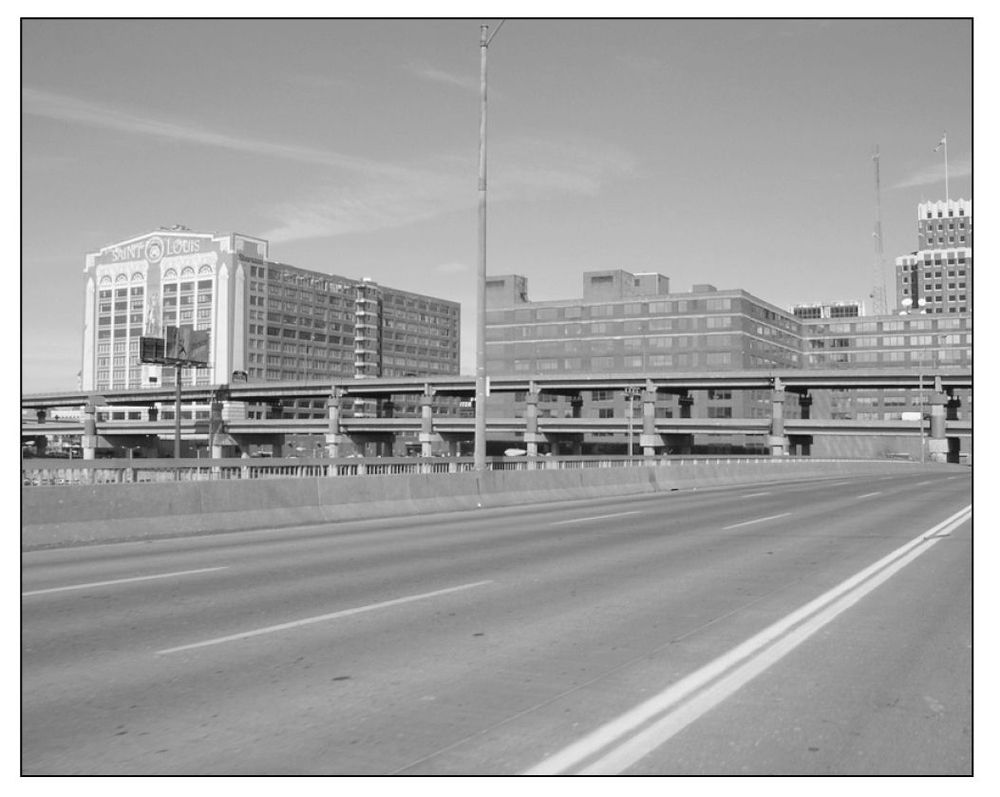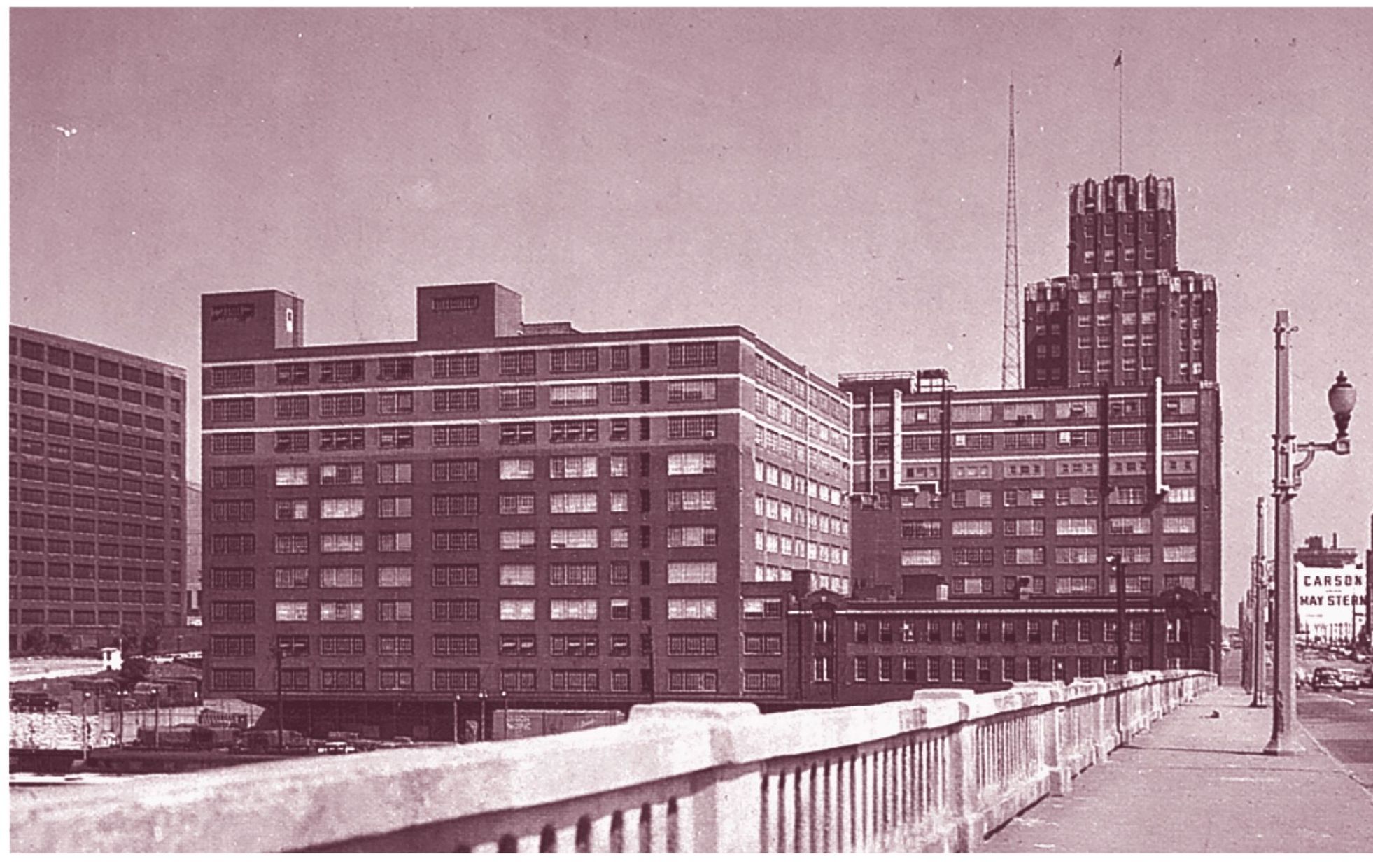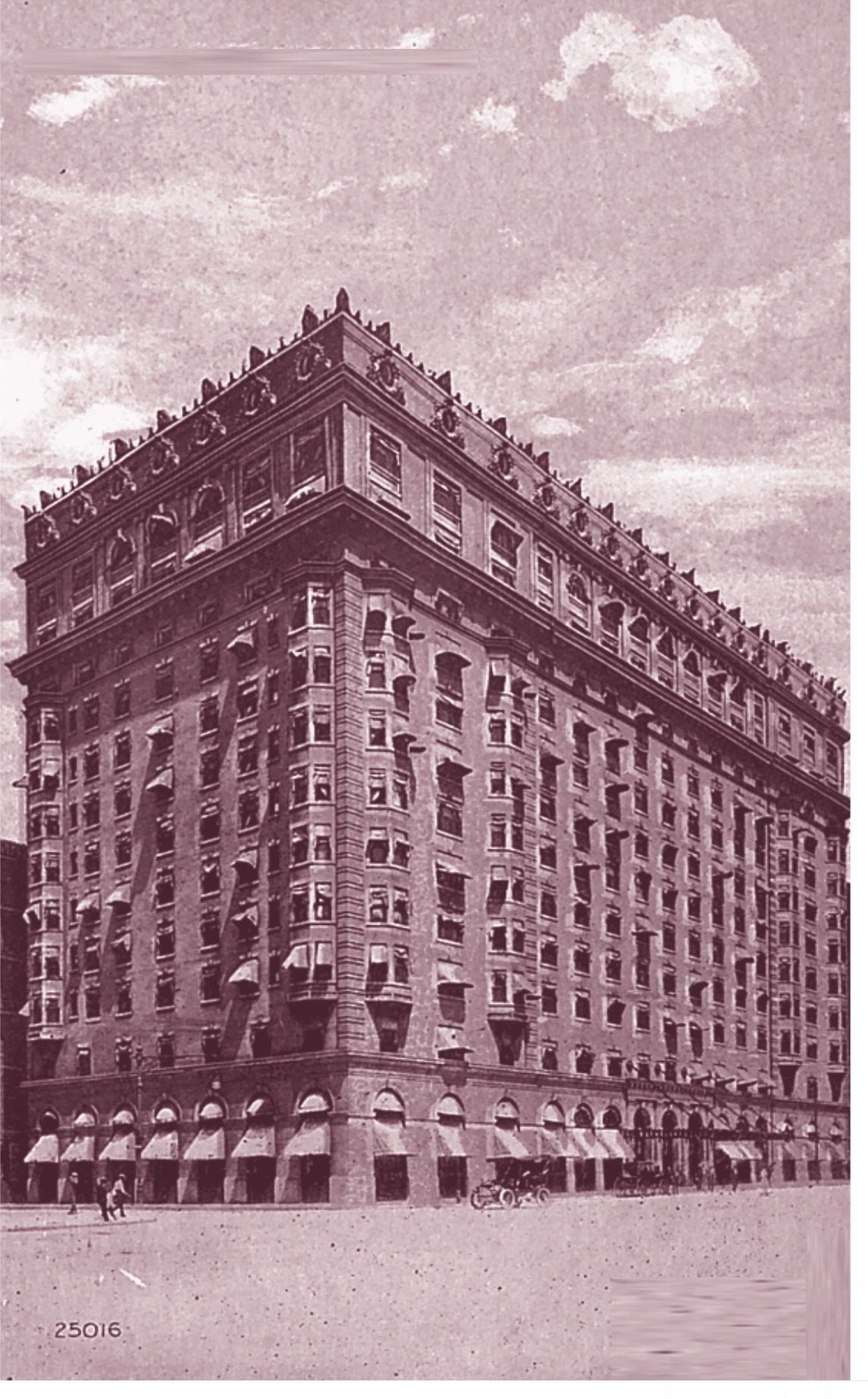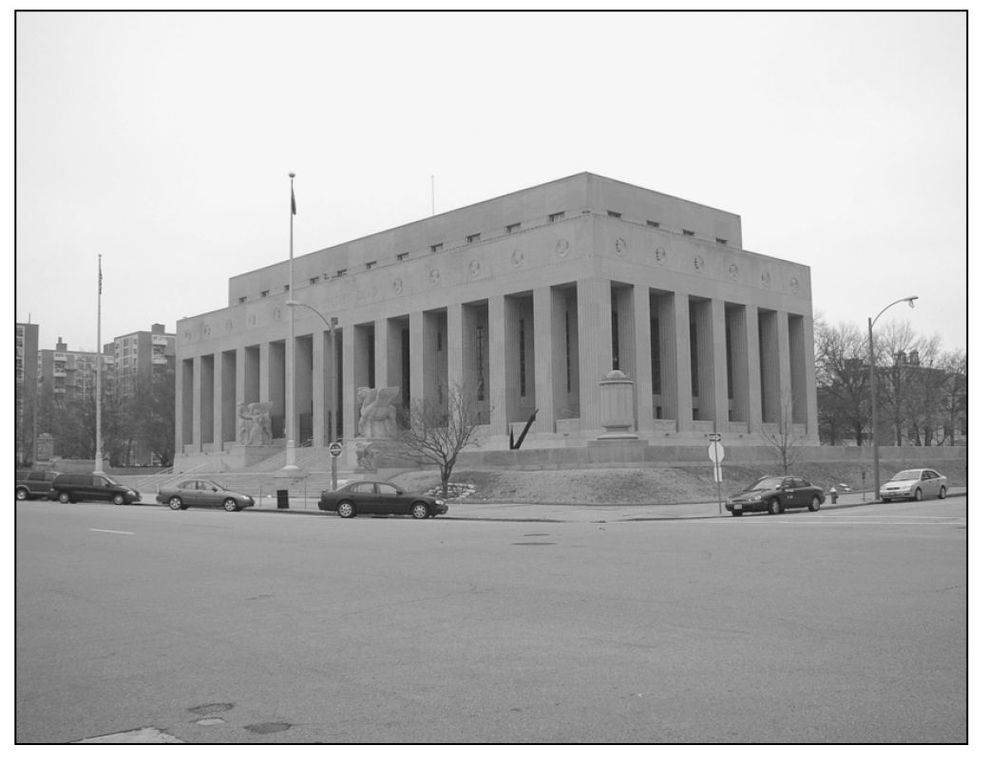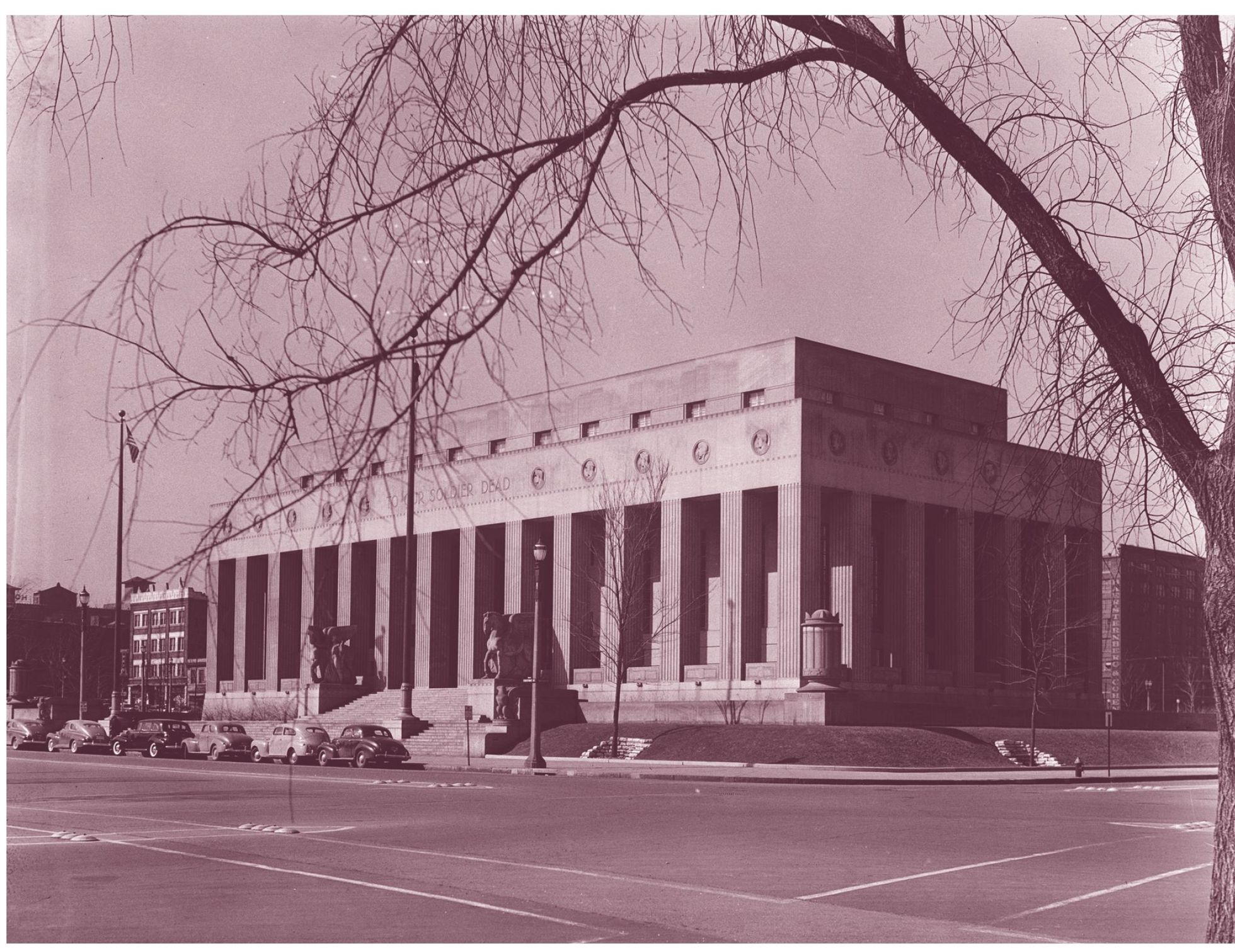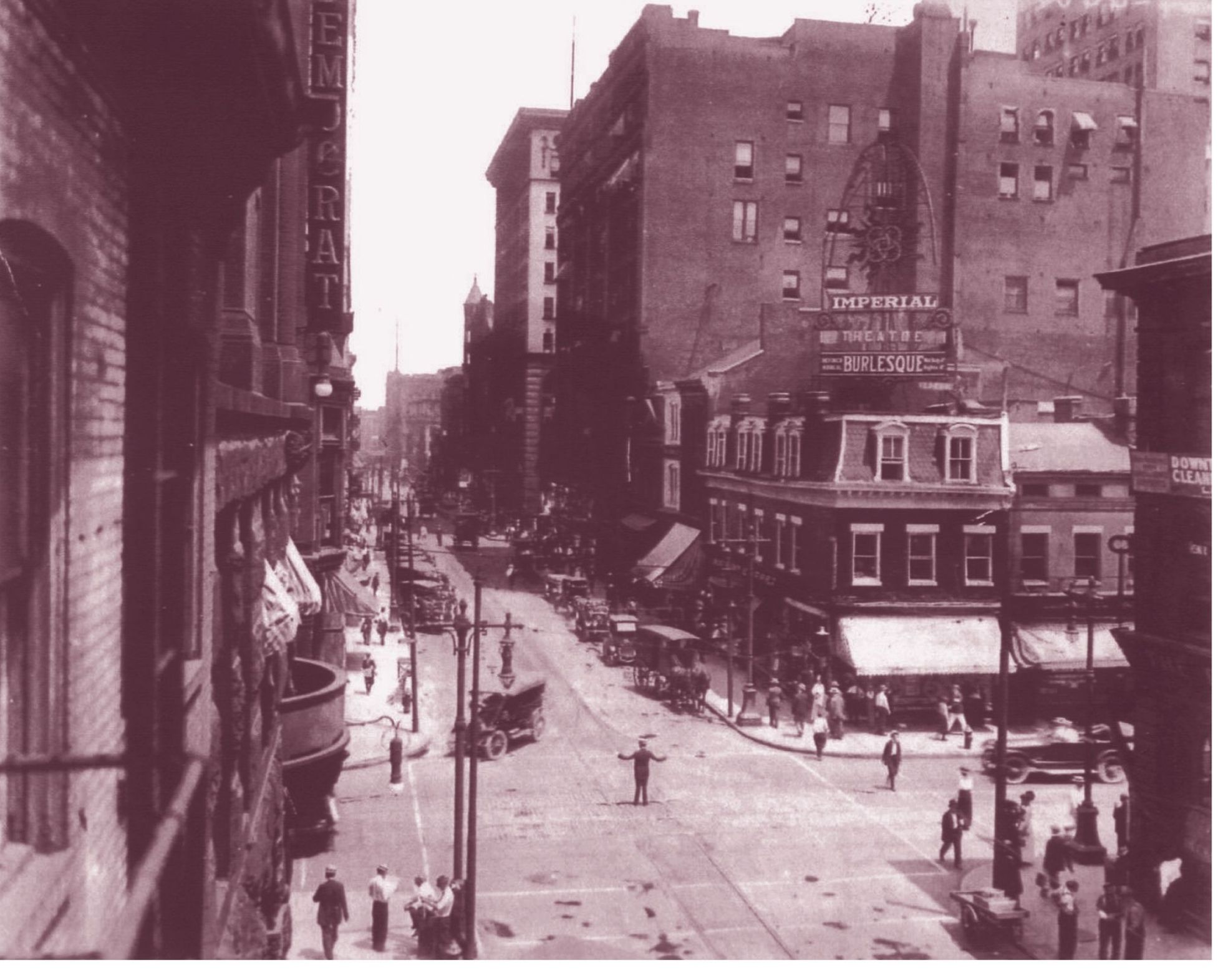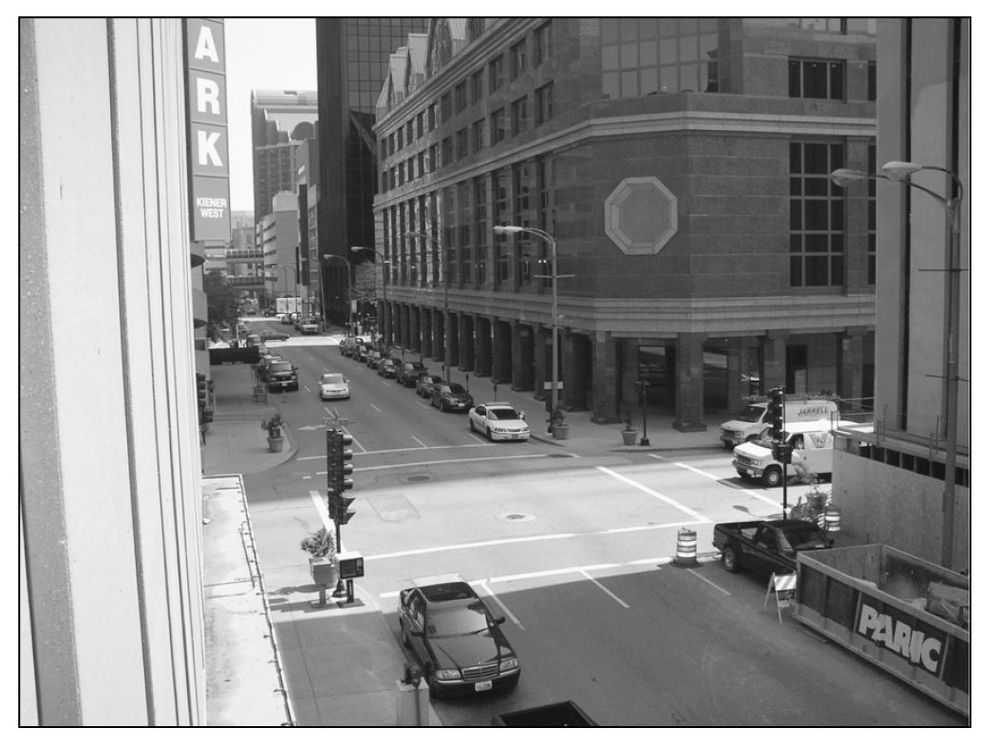Chapter 1
DOWNTOWN
Similar to the scene on the cover (but even before the Admiral), about all thats left from this riverfront scene around the turn of the last century is the MacArthur Bridge (closed), the train tracks (buried), and the cobblestones on the levee (still able to twist an ankle). Oh, and the Mississippi River, of course.
The sign above greeted travelers going west across the Municipal Free Bridge into St. Louis. This photo was taken in 1917, the year the bridge first opened. The overpass section over Seventh Street, seen here, was added later. The Municipal Free Bridge was renamed the MacArthur Bridge in 1942 for the World War II general. The roadway was closed in 1981 due to the cost of repairing the roadway and to the long history of cars crashing through its railings at places where the roadway makes sudden jogs. About the only item left standing is the ornate bridge railing.
The scene below depicts the final construction activity taking place on the Municipal Free Bridge before its opening in 1917. The street in the foreground is Seventh Street, and the road running back towards the river is Papin Street.
The statue of Pierre Laclede stands watch on the grounds of St. Louis City Hall, as depicted in this postcard view from the 1920s. The buildings on the left are the Bell Telephone Building and the Civil Courts Building, the two tallest buildings in St. Louis at the time the postcard above was made. Also seen are a corner of the Federal Courts Building, and city hall in the foreground. The exact same buildins still stand. However, the Bell Telephone Building and the Civil Courthouse now rank as the sixth and seventh tallest buildings in St. Louis.
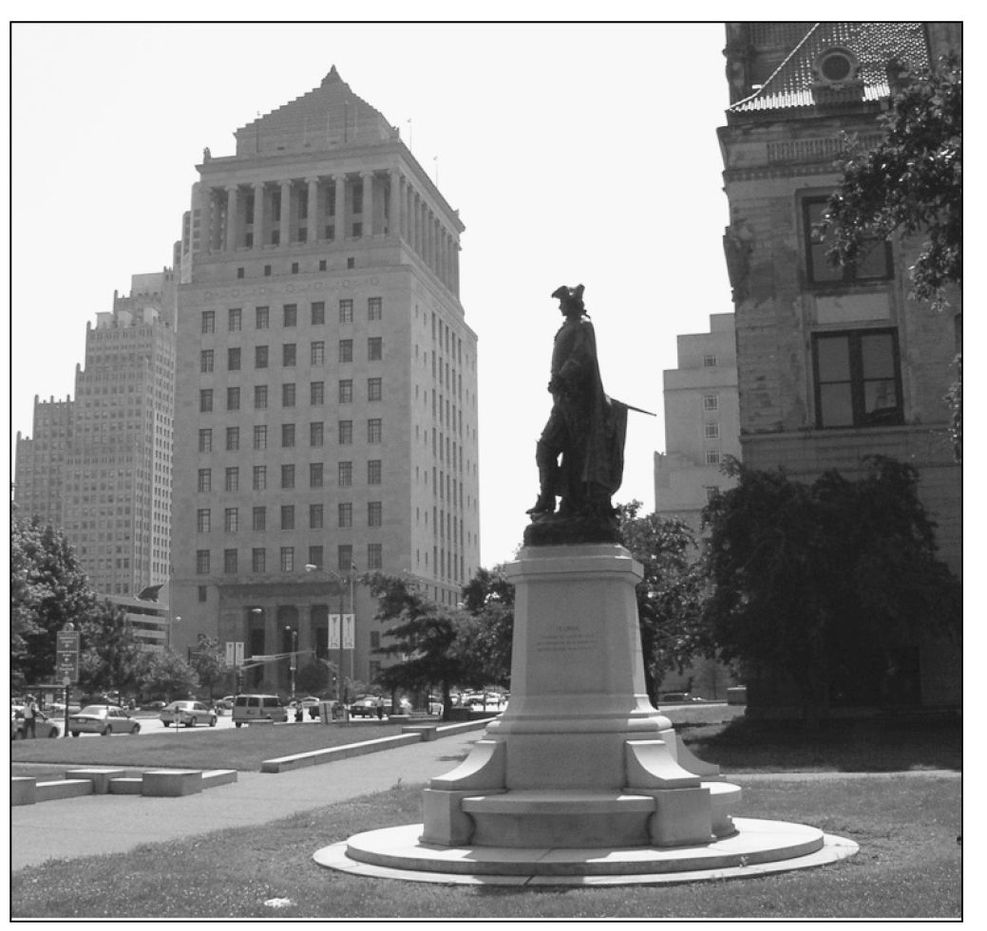
As seen in the postcard below, the 18-story Mart Building at Twelfth and Spruce originally housed the U.S. Army Area Support Center. The tall building in the background is the Missouri Pacific building, finished in 1928, whereas the Mart building was completed in 1931. On the left side of the current photo on the right is the Sheraton City Center Hotel. Built as the J. C. Penney Co. Warehouse in 1929, it was the Edison Brother Warehouse from 1954 until 1994. Today most people know it simply as the 13-story canvas for the murals of New York artist Richard Haas.
At the western edge of downtown, built just in time for the opening of the 1904 Worlds Fair, the Jefferson Hotel was the largest hotel in the city. Today, the building at 415 North Tucker Blvd is known as the Jefferson Arms Apartments.
In 1923 the residents of St. Louis voted to purchase a memorial plaza and monument to commemorate St. Louisans who lost their lives in World War I, although it wasnt until 1935 when construction actually began on the corner of Chestnut and Fourteenth Streets. The Soldiers Memorial was opened to the public on Memorial Day 1938.
The Imperial Burlesque Theater was located on the northeast corner of Sixth and Pine, as shown in this vintage photograph of the busy intersection. Note the traffic policeman in the middle of the street directing traffic. The photo at left was taken hanging out of an opening in a parking garage. It captures the intersection almost identically to the the photograph at the top.

